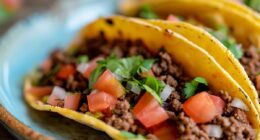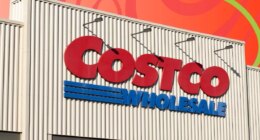Similar to other industries, the winners and losers of the restaurant industry change quickly: some chains grow quickly while others shrink, compete for limited consumer demand, and, sometimes, go out of business.
Needless to say, the restaurant chain world has seen some major changes during the past 50 years of rapid growth, and many beloved chains have closed their doors for good along the way. The largest restaurant chains of decades past are not the same as the largest restaurant chains of today. In an industry with a 30% failure rate, many restaurant brands that once ruled the scene are now just a distant memory. In fact, the reigning restaurant chain in the United States in the ’60s and ’70s just closed its final location in 2022.
Here are six of the largest, most powerful restaurant chains that were once all the rage but no longer exist, proving that no one’s too big to fail.
Chi-Chi’s
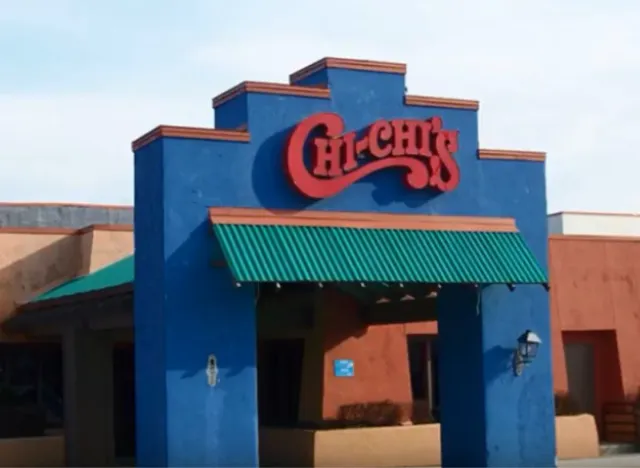
You are probably familiar with Chi-Chi’s salsa, but what you might not know is that the name was inspired by a Tex-Mex restaurant chain from the ’70s. Chi-Chi’s was born in 1975 in downtown Minneapolis, just south of the Canadian border. The chain, famous for its deep-fried delights, including chimichangas, expanded rapidly. Two decades after its inception, it had 210 locations across the United States.
But increased competition and unfortunate events, like a major food poisoning scandal, led to the end of the chain’s reign. Other Tex-Mex chains started vying for a piece of the pie, including On the Border and Taco Bell. Chi-Chi’s didn’t have the same success in the rest of the country as it did in the Midwest and started closing restaurants in the late ’80s. Its footprint was down to under 200 locations by 2002.
ChiChi’s filed for bankruptcy in early 2003 and then was responsible for a hepatitis A outbreak that sickened hundreds of people and killed four, which was the proverbial nail in the coffin. Chi-Chi’s is survived by Hormal-owned brands and has a few overseas locations.
Mr. Steak
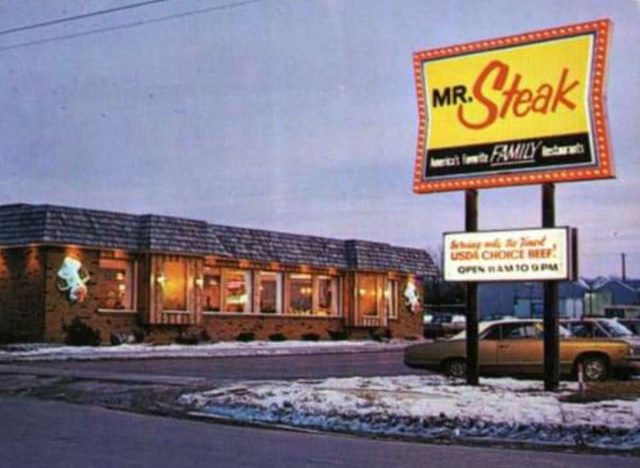
Before Outback or LongHorn, there was Mr. Steak. Not surprisingly, this restaurant chain, which started in Colorado in the ’60s, specialized in affordable steak dinners. Unlike Chi-Chi’s Midwest location, this was the perfect spot–and time–for a steakhouse. The chain billed itself as “America’s Steak Expert,” and people loved it. The chain’s pledge, according to the founder James A. Mather, was, “To serve the best, low calorie, high protein meal, at the lowest possible price.” Surviving photos of ads show T-bone steak dinners regularly for $3.99, which included salad, bread, and potatoes, being discounted to $2.99!
At the chain’s peak in 1978, there were over 270 restaurants in the United States. While the competition from newer steak chains, like Sizzler, contributed to its downfall, fans of Mr. Steak claim that its downfall was the chain shifting away from steak. When it added things like chicken, fish, and other options to its menu, the steak message was diluted. This echoes the words of the founder, who stated in a 2007 interview that “each time we deviate from this original pledge, we always come right back to it and have come to realize that this is our strength and concept.” But, honestly, we’d still kill for steak and king crab for $8.45!
Mr. Steak filed for Chapter 11 bankruptcy in 1987, and by 1992, there were only 57 Mr. Steak locations left. At that time, a company called Omnivest International bought the remaining locations and attempted to revitalize them. That effort ultimately failed, and in 2009, Mr. Steak’s final location closed.
Howard Johnson’s
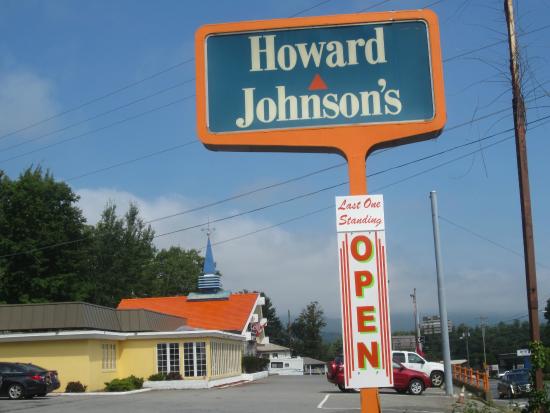
Beloved for its fried clams, frankforts, and signature ice cream available in 28 flavors, Howard Johnson’s was once the largest restaurant chain in the U.S., with a footprint of over 1,000 locations. HoJo’s popularity peaked in the ’60s and ’70s, but declined shortly thereafter, as the chain struggled to keep pace with competitors like McDonald’s and KFC.
CEO Howard B. “Bud” Johnson sold the company to Imperial Group (a British tobacco company) in 1979 for $630 million, and five years later Imperial passed the brand along to Marriott for about half the price. Marriott went on a restaurant closing spree, culling the number of company-owned HoJos and reducing the chain’s footprint to a fraction of its original size.
With the recent closure of Howard Johnson’s last remaining restaurant—a location in Lake George, N.Y.— the former giant is officially gone for good.
Red Barn
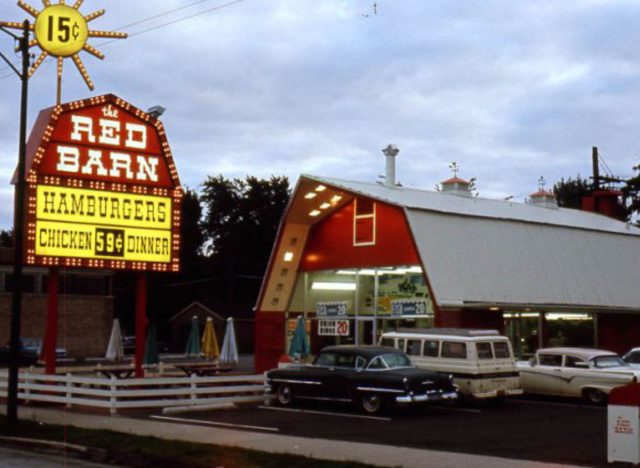
Red Barn, founded in 1961 in Springfield, Ohio, was beloved for its Big Barney and Barnbuster burgers (the former of which predates the Big Mac),
The brand was acquired in 1963 by Richard O. Kearns and developed into a huge franchise with a domestic footprint of 300 to 400 restaurants across 19 states. It even had branches in Canada and Australia.
Red Barn’s progress, however, slowed when it was acquired by United Servomation in the late ’60s and, within a decade, absorbed by City Investing Company, the parent company of Motel 6. Interested primarily in the chain’s real estate, the investment firm phased out Red Barn operations, putting an end to the brand’s marketing and allowing franchisee leases to expire. By 1988, the once-beloved Red Barn was no more.
Henry’s Hamburgers
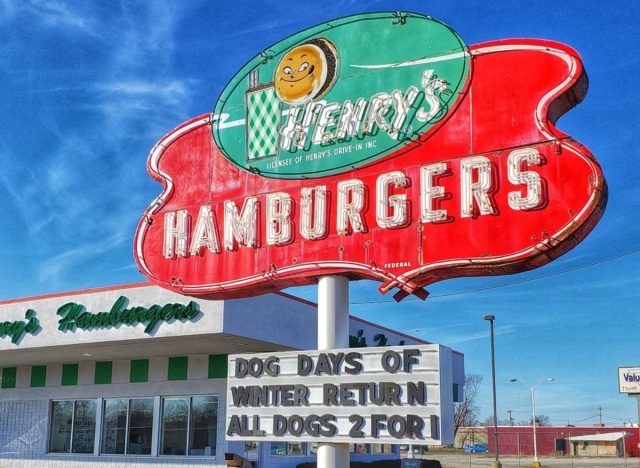
Founded in 1954, Henry’s Hamburgers got its start as an offshoot of Bresler’s Ice Cream, a Chicago ice cream chain. While Henry’s was originally intended as a vehicle for Bresler’s popular malts and milkshakes, by the mid-’60s it had taken on a life of its own, expanding to over 200 restaurants coast to coast (even outnumbering McDonald’s at one point).
However, with the growth of other burger brands like Wendy’s and Culver’s, the fast-food industry became increasingly competitive. Failing to keep pace with its peers, Henry’s entered a decline in the ’70s. Today, there is just one Henry’s Hamburgers remaining—a location in Benton Harbor, Mich.
Burger Chef
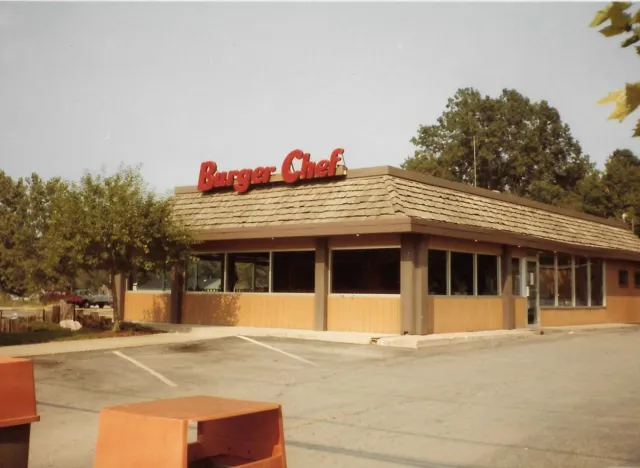
Burger Chef was founded in 1957 in Indianapolis. Leveraging a number of industry innovations, including a patented flame broiler and fast food’s first kids’ meal, its popularity and footprint grew rapidly.
The chain saw major growth in the ’60s and ’70s, going from 600 restaurants in 1968 to more than 1,000 by 1972 (putting it roughly on par with McDonald’s, which, in the same year, had a footprint of about 1,600).
By the late ’70s, however, the brand was beginning to lose its footing, and again, the culprit was growing competition. While Burger Chef managed to set itself apart with its kids’ meals, which debuted in 1973, it failed to retain its monopoly on the lucrative menu category.
In 1978, McDonald’s launched the Happy Meal, and Burger Chef lost a subsequent copyright lawsuit. The chain rallied in 1978 with a Star Wars licensing agreement but still couldn’t keep pace with Mickey D’s and all its innovative ideas.
Hardee’s acquired Burger Chef in 1981 for $44 million and quickly rebranded most of the chain’s restaurants.








